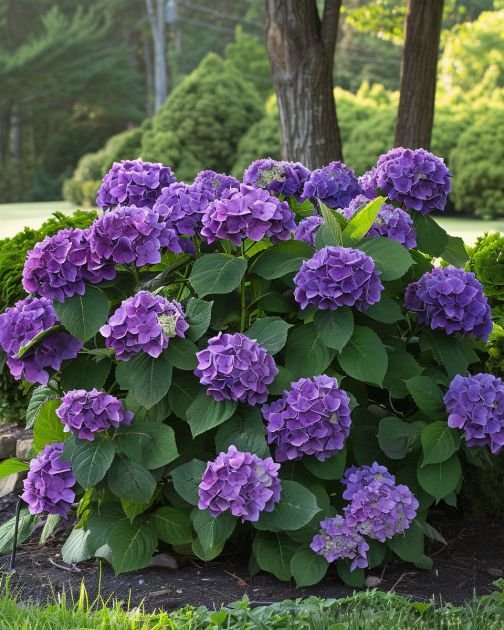For garden enthusiasts, achieving lush, voluminous blooms of hydrangeas stands as one of the quintessential markers of gardening success. These enchanting flowers captivate onlookers not only with their vibrant shades but also with their sizeable, opulent blossoms that transform any garden into a picturesque landscape.
Understanding the secrets behind maximizing the growth and flowering of hydrangeas can greatly enhance the beauty and vibrancy of your garden. This article is tailored to guide you through a tried-and-tested gardener’s trick that promises not only immediate enhancement of your hydrangeas’ bloom in the upcoming season but also ensures their flourish for years to come.
The Importance of Soil pH and Aluminum Availability:
1. Test your soil’s pH level: Hydrangeas thrive in acidic to neutral soil. Testing your soil’s pH is crucial as it directly influences nutrient availability. For most hydrangea varieties, a pH between 5.2 and 5.5 is ideal.
2. Adjust the soil pH, if necessary:
If your soil tests outside the optimal pH range, consider amending it. To lower pH, elemental sulfur or aluminum sulfate can be effective. For increasing pH, garden lime works well.
3. Enhance aluminum uptake:
Aluminum is key for the vibrant blue color in certain hydrangeas, like the bigleaf variety. If your soil is naturally low in aluminum, or the pH is too high for aluminum absorption, incorporate aluminum sulfate into the soil to encourage richer, blue-toned blooms.
Elevating Your Watering and Fertilization Techniques:
4. Regular watering schedule:
Maintain consistent moisture levels in the soil, especially during dry periods. Hydrangeas require considerable water, but avoid waterlogging which can lead to root rot.
5. Use a well-balanced fertilizer: Select a fertilizer that is high in phosphorus to promote vigorous blooms rather than excessive foliage. Apply in early spring, just as the plants start actively growing, and again before mid-summer to encourage continued blooming.
Pruning: Key to Long-term Bloom Success:
6. Understand the specific pruning needs:
Different hydrangea varieties require different pruning techniques. For example, many hydrangea varieties form blooms on the previous year’s stems, so it’s critical to prune right after blooming and before the growth season ends.
7. Remove only old and dead wood:
Pruning to shape the hydrangea should be gentle. Focus primarily on removing dead or old wood, and thinning out crowded centers to improve sunlight exposure and air circulation.
This gardening trick for fuller, long-lasting hydrangea blooms centers on understanding and manipulating the environmental variables that affect these plants most significantly. From soil composition and pH to proper watering and pruning techniques, these steps help create a hospitable environment for hydrangeas to not only survive but thrive. With patience and meticulous care, you will be rewarded with stunning, envy-inducing hydrangea blooms season after season.



